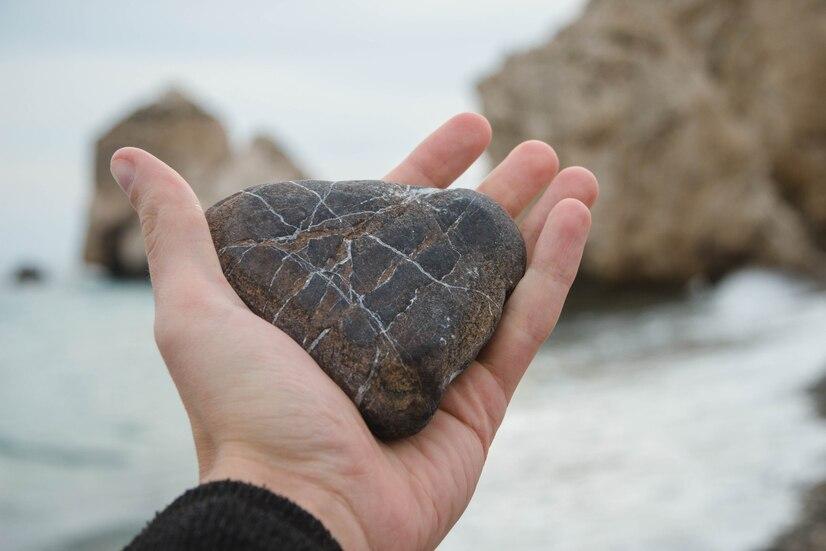
The pet rock: how to make big money from simple ideas
In 1975, the pet rock sold 1.5 million units at $3.95 a pop. And even though it was a fad that lasted only 6 months, it made the inventor, Gary Dahl, a millionaire overnight.
It’s one of those ideas so simple you think, “Man, why couldn’t I have come up with that?!?!”
Most people will chalk up the runaway success of the pet rock as luck. But if you go beneath the surface, you can learn valuable business lessons that are still relevant for entrepreneurs today.
And once you apply these lessons, you can start charging premium prices and make your business stand out from the competition — even in the most competitive markets. So let’s dig into the brilliance behind the pet rock.
https://abcnews.go.com/video/embed?id=11155997
Video Source: ABC News
Create products that solve a real need
Most people think the pet rock was nothing but a big gimmick. But in reality, it was born out of need. In April 1975, Gary Dahl was having drinks with friends at a bar in Los Gatos, California, the town he lived in for many years.
The conversation turned to pets. Dahl heard his friends complaining about how they had to walk, feed, groom, and clean up after their pets.
And that’s when the brilliant idea struck. Dahl told his friends he had a pet that didn’t need any care, was never disobedient, and would never become sick or die. It was the perfect pet: A rock.
Here’s the takeaway from all this: Go out and talk to people in your target audience. You will be surprised at what kind of problems they will reveal to you and how you might be uniquely positioned to solve it.
Imagine if you were someone with dog training experience. And you were sitting in the same bar Dahl was in, hearing all those people with pet problems complaining.
You could’ve asked them a few questions to dig deeper into their problems. This may have led to an online product about training a dog, how to fix a specific behavioral problem, or maybe even a pet care service for busy working people.
Figure out who your audience really is
When I was a kid, I asked my parents countless times, “Can we get a dog? I promise I’ll take care of it.” I’d reckon that’s how many of the 96 million households in the U.S. that own either a dog or cat got duped into pet ownership.
Here’s the thing. Parents know that when a kid says, “I promise I’ll take care of it,” they’ll end up doing most of the work. It also means they’ll shell out extra money for pet care costs.
In 1975, most people didn’t have much extra cash lying around, and those who did probably didn’t want to spend it. The country was in a severe recession, and energy crisis meant gas was rationed. The last thing grown ups wanted to think about was caring for a pet.
The pet rock was perfect for that time period. Parents who didn’t want to deal with the lifetime costs and caring for a pet, but wanted to make their kids happy, could easily shell out $3.95.
This is an important concept for your business. For a product or service to be successful, your potential customers must have both the ability and the willingness to pay.
Even though times were tough in 1975, most working parents could afford $3.95. That’s roughly $17 in today’s money and way cheaper than getting a pet. This is the ability to pay.
And if your kid is constantly nagging you for a pet, you’d gladly pay that money to keep them quiet. That’s the willingness to pay.
Think about how you could use this concept to charge premium prices. Say you’re a fitness trainer whose target audience is executives at mid-size companies. Do they have the ability to pay? Of course, executives make lots of money.
Do they have the willingness to pay? You bet. They need to stay healthy on a busy schedule so they can run their businesses.
If you can nail these two elements, you can successfully market any product or service.
Make your products an experience
A rock by itself is underwhelming. You can find them everywhere, and they’re not worth spit in a cup.
But you can boost their perceived value by creating an exceptional customer experience and paying close attention to detail. That’s exactly what the pet rock did.
The rocks were smooth, egg-shaped stones from Rosarito Beach in Mexico. They were comfortable to hold, and nobody would get cut by a jagged edge.
They came packed in a cardboard carrying case that had holes in it. And the rock was nestled on a bed of excelsior. Notice how the word “excelsior” conjures up a different feeling than “styrofoam” or “bubble wrap”?

Each pet rock also came with a 32-page instruction manual that contained gems like “If, when you remove the rock from its box it appears to be excited, place it on some old newspapers. The rock will know what the paper is for and will require no further instruction. It will remain on the paper until you remove it.”
This was engaging content before Buzzfeed was even a thing. As Gary Dahl told People magazine in 1975, “People are so damn bored, tired of all their problems. This takes them on a fantasy trip — you might say we’ve packaged a sense of humor.”
Think about how brands go out of their way to create an experience for you.
- Apple packages their computers, phones, and tablets in a pristine, minimalist, white box. You feel like royalty the minute you hold it in your hands. Compare that to other computers that come in drab cardboard boxes.
- Walk into a Louis Vuitton, Gucci, or Prada store and you might be served a glass of champagne. It’s a very different experience than entering Ross, where you’re lucky if someone even says hello to you.
- Southwest lets their flight attendants give safety announcements off script to encourage people to pay attention.
It’s often small touches that take ordinary products and make them extraordinary.
Think about ways you can do this for your business. Here are some ideas to get you started:
- Make a quick phone call or send a handwritten thank you card to anyone who bought from you.
- Create a welcome video that everyone who buys from you gets through email. It doesn’t have to be complicated. Just a quick thank you, what to expect next, and where people can ask any questions.
- Listen to your customers. Send them surveys at various points of their journey. Tell them that you value their feedback. And if you ever make product changes, it makes it feel like their opinions matter.
These small touches cost almost nothing, but can go a long way in creating an experience people will want to talk about. And over time, you’ll stand out from the competition.
Eventually, the hysteria surrounding the pet rock fizzled out. After all, it takes more than one hit product to build a sustainable business. But don’t discount these timeless business lessons — they made the founder a millionare.
Want to build a business that enables you to live YOUR Rich Life? Get my FREE guide on finding your first profitable idea.



